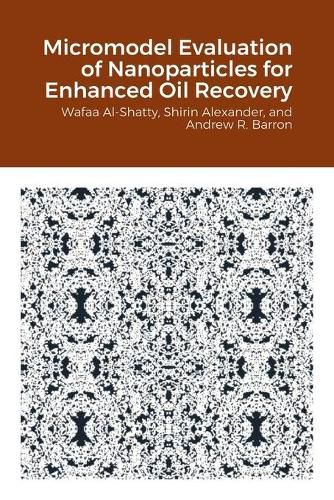Micromodel Evaluation of Nanoparticles for Enhanced Oil Recovery
Wafaa Al-Shatty, Shirin Alexander, Andrew Barron

Micromodel Evaluation of Nanoparticles for Enhanced Oil Recovery
Wafaa Al-Shatty, Shirin Alexander, Andrew Barron
This title is printed to order. This book may have been self-published. If so, we cannot guarantee the quality of the content. In the main most books will have gone through the editing process however some may not. We therefore suggest that you be aware of this before ordering this book. If in doubt check either the author or publisher’s details as we are unable to accept any returns unless they are faulty. Please contact us if you have any questions.
Enhanced oil recovery (EOR) is a tertiary process whereby oil is extracted from an oil field that could not otherwise be extracted. As such EOR can extract 30%-60% of a reservoir's oil in place (OIP) compared to 20% to 40% using primary and secondary methods. While there is a clear economical advantage (depending on the current price of oil), there is also an environmental impact of EOR. On the positive side, EOR can be used in place of drilling additional wells, while on the other hand EOR results in large quantities of produced water which must be correctly disposed of or treated. One of the reasons that not all the reservoir oil is readily recovered without EOR is that there is significant surface tension between the oil and the reservoir rock. The injection of various chemicals, usually as dilute solutions, have been used to aid mobility through the reduction in surface tension and interfacial tension. Although dilute solutions of surfactants and polymers have been deployed commercially, there is a desire to develop both more efficient chemicals as well as those with reduced environmental impact. One such class of potential EOR additive are nanomaterials (sized between 1 and 100 nm), due to their high surface-to-volume ratio, wettability control, and interfacial tension reduction. The use of nanomaterials to EOR is a very attractive, yet challenging task, because prior to deployment in a reservoir it is necessary to gain an understanding of the relative performance of nanomaterials as compared to traditional methods. Although core flood methods offer a quantitative value for oil recovery, they do not provide detailed insight into mechanism. Micromodels have been used as a flexible method for determining the efficacy of nanomaterials as well as combinations of nanomaterials with surfactants and polymers. This book is aimed at providing an overview of methods whereby nanomaterials can be investigated with regard to EOR.
This item is not currently in-stock. It can be ordered online and is expected to ship in 7-14 days
Our stock data is updated periodically, and availability may change throughout the day for in-demand items. Please call the relevant shop for the most current stock information. Prices are subject to change without notice.
Sign in or become a Readings Member to add this title to a wishlist.


